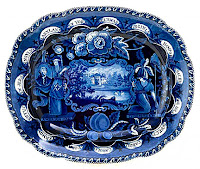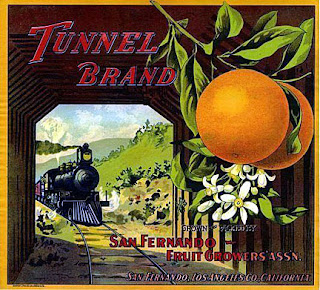 QUESTION: I’ve always wondered how dealers decide on the price of an antique. Sometimes, the prices seem deliberately inflated. And at other times, they seem downright cheap. What governs pricing in the antiques business?
QUESTION: I’ve always wondered how dealers decide on the price of an antique. Sometimes, the prices seem deliberately inflated. And at other times, they seem downright cheap. What governs pricing in the antiques business?
ANSWER: That’s a great question. Most of the time, collectors dwell on the value of an antique. They usually don’t think about the price, unless it has a direct relationship to that value.
The important thing to remember is that buying and selling antiques is a business. And just like any other business, dealers have overhead—if operating a shop, then electricity, heating, phone, and other utilities; if selling at shows, then the booth fee, advertising, etc.
 The key to making a profit in any retail business is to buy low and sell high. Most dealers mark up the price of their antiques by 50 percent over the buying price. But the higher the buying price, the less they can mark items up. High-end dealers selling antique for four to six figures often only use a 20 percent or less mark up. In this case, they need to sell the item quickly to make enough turnover to make a profit.
The key to making a profit in any retail business is to buy low and sell high. Most dealers mark up the price of their antiques by 50 percent over the buying price. But the higher the buying price, the less they can mark items up. High-end dealers selling antique for four to six figures often only use a 20 percent or less mark up. In this case, they need to sell the item quickly to make enough turnover to make a profit.
But a lot of dealers have antiques inventory that’s been in their shops too long. The longer an item remains unsold, the less the dealer makes on it because unlike the static price of an antique, the cost of running a business continues to change.
And what about sales and bargaining? Many antiques dealers will bargain with a customer over the price of an antique. They know how much they must make on the item and won’t go below a certain price. Bargaining lowers the mark up and cuts into overhead costs.
 Some antiques dealers, much like other retail business owners, will occasionally have sales to move merchandise. But don’t expect deep discounts on these items. Remember the mark up. Usually, sales bring customers into the shop who most likely will find something else that they like and buy that instead. Or they may buy several smaller items.
Some antiques dealers, much like other retail business owners, will occasionally have sales to move merchandise. But don’t expect deep discounts on these items. Remember the mark up. Usually, sales bring customers into the shop who most likely will find something else that they like and buy that instead. Or they may buy several smaller items.
Generally, the higher the prices of the antiques, the less likely a dealer will bargain much for them. And those same dealers will not have sales.
 Unlike antiques dealers who operate shops and do shows, flea market and antiques mall dealers usually deal in much smaller and less expensive merchandise. They’re more willing to bargain the price down a bit to make a sale. And often will lower prices on items that have been in their inventory for too long.
Unlike antiques dealers who operate shops and do shows, flea market and antiques mall dealers usually deal in much smaller and less expensive merchandise. They’re more willing to bargain the price down a bit to make a sale. And often will lower prices on items that have been in their inventory for too long.Antiques are such subjective items that prices vary tremendously depending on demand, current trends, and rarity. Prices can vary from dealer to dealer, so it’s difficult to compare the price of one piece with that of a similar or identical one. Antiques appreciate over the long term. Like the stock market, antiques rise and fall in value depending on demand and trends.
 So how do antiques dealers ultimately figure the price of the items in their inventory? First and foremost is what the dealer paid for the item. Obviously, the higher the original price, the higher the retail price. And thanks to T.V. shows like The Antiques Roadshow and Pawnbrokers, the buying public has an inflated idea of what an antiques value actually is.
So how do antiques dealers ultimately figure the price of the items in their inventory? First and foremost is what the dealer paid for the item. Obviously, the higher the original price, the higher the retail price. And thanks to T.V. shows like The Antiques Roadshow and Pawnbrokers, the buying public has an inflated idea of what an antiques value actually is.
The value of an antique is what someone is willing to pay for it. So the value is essentially what the last person paid for the piece. Values for high-end pieces usually result from auction sales while those for lesser valued collectibles may result from books dealing with a specific category of collectibles such as Depression Glass or world’s fair collectibles. While the prices of the former are kept in proprietary, subscription-only databases, those of the latter are available to the general public. And then there are auction/buy-it-now sites like eBay online.
 And many antiques dealers consult online auction results and other sites to determine what the going rate will be for the items they’re pricing.
And many antiques dealers consult online auction results and other sites to determine what the going rate will be for the items they’re pricing.
Finally, dealers add the percentage of markup, determined by the amount of their overhead and what their local market will bear.
One of the reasons many antiques sell for many times over their auction estimate is that many live on-site antiques auctions now include phone bids while many online auctions allow bidders to bid in real time. These phone and live online bids now come from anywhere, thus the final selling price of the item isn’t affected by the local market.
So the next time you’re out antiquing and come across that piece that you just can’t live without, remember the complexities of antiques pricing. And if you can purchase the piece for a reasonable price in the end, all the better.
To learn more about what it’s like to start your own antiques business, read How to Start a Home-Based Antiques Business.
To read more articles on antiques, please visit the Antiques Articles section of my Web site. And to stay up to the minute on antiques and collectibles, please join the over 30,000 readers by following my free online magazine, #TheAntiquesAlmanac. Learn more about railroad antiques in "All Aboard!" in the 2021 Summer Edition, online now. And to read daily posts about unique objects from the past and their histories, like the #Antiques and More Collection on Facebook.


















































